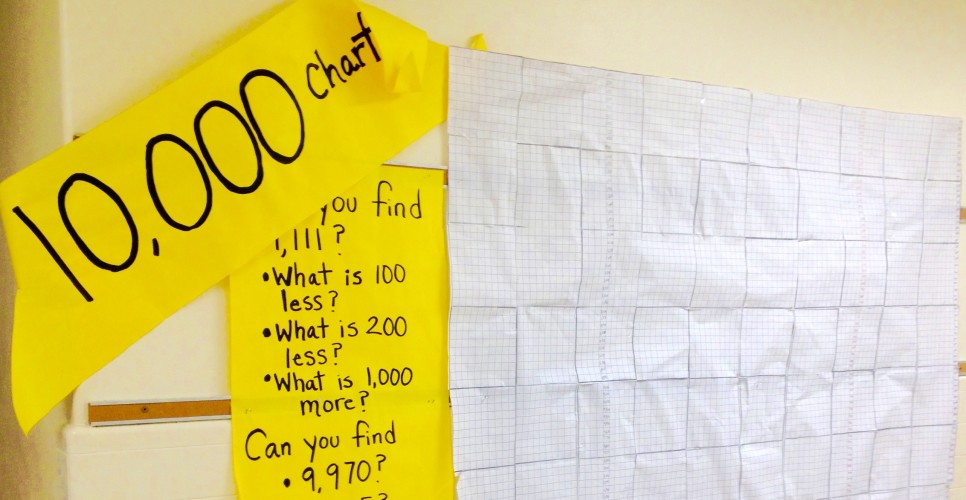The Math Diet: An Instructional Framework to Grow Mathematicians
We are educators, readers, writers, and mathematicians.
We seek to unite the two worlds of math and literacy.
We began our journey together, ten years ago, as second grade teachers collaborating to plan units, field trips, and family-school events. As we planned, we made connections among subject areas. We created learning experiences that made these connections explicit. We strove to engage students in learning as a cohesive whole.
We researched to understand the concepts behind skills we were required to teach. We created concept maps on huge pieces of paper to make sense of connections. We cheered when we found an overarching concept for the school year: Interdependence. We fell in love with units that unified skills and facts into meaningful big ideas: Number systems around the world share three essential characteristics; Writers, readers, mathematicians, historians, and scientists are pattern makers; and Communication can change the world.
Over time, we shifted roles to become reading and math specialists, instructional coaches, and reading and math methods instructor and professor. We notice teachers usually feel more confident and receive more professional development in literacy instruction, while they may feel less confident and knowledgeable in math.
Our goal is to build a bridge between literacy and math – to connect what teachers know and do in literacy to what is effective in math.
The metaphor of a balanced diet is used in literacy to describe the vital components of literacy instruction to grow readers and writers (NRP, 2000). In a balanced diet, the components work in tandem to give students multiple contexts to practice and transfer their understanding, knowledge, and skills. Many of you know and use a literacy diet approach when planning literacy instruction. Here are two links and a book with more information about a literacy-diet approach based on literacy education research:
- National Reading Panel,
- The Balanced Literacy Diet, and
- Developing Word Recognition (2014) by Latisha Hayes and Kevin Flanigan.
We created The Math Diet (© 2012), an instructional framework to grow mathematicians based on mathematics education research. The Math Diet for Kindergarten through fifth grade students includes five components: counting, subitizing, conceptual understanding, strategic competence, and procedural fluency. Mathematics instruction should address these five components in order to develop mathematical proficiency (NCTM, 2014). There are five indicators of mathematical proficiency: conceptual understanding, procedural fluency, strategic competence, adaptive reasoning, and productive disposition (NRC, 2001).
Instruction based on The Math Diet develops these five areas of students’ understanding of and ability to do mathematics, and therefore, develops mathematical proficiency. The Math Diet provides an instructional framework to help teachers make decisions about the content of their instruction, which develops conceptual understanding, procedural fluency, strategic competence, as well as decisions about the lesson structure and instructional strategies, which develop adaptive reasoning and productive disposition.
You can download The Math Diet Summary Table here. The table includes a definition of each component, an explanation of each component’s importance, and guidelines for when each component should be taught as well as how each should be taught.
Look for The Math Diet in March’s issue of Teaching Children Mathematics!
References
- National Council of Teachers of Mathematics. (2014). Principles to Actions: Ensuring Mathematical Success for All. Reston, VA: NCTM.
- National Reading Panel. (2000). Teaching Children to Read: An Evidence-Based Assessment of the Scientific Research Literature on Reading and Its Implications for Reading Instruction. Donald N. Langenburg (Ed.). National Institute of Child Health and Human Development. Washington, DC: U.S. Government Printing Office.
- National Research Council (2001). Adding It Up: Helping Children Learn Mathematics. J. Kilpatrick, J. Swafford, and B. Findell (Eds.). Mathematics Learning Study Committee, Center for Education, Division of Behavioral and Social Sciences and Education. Washington, D.C.: National Academy Press.

